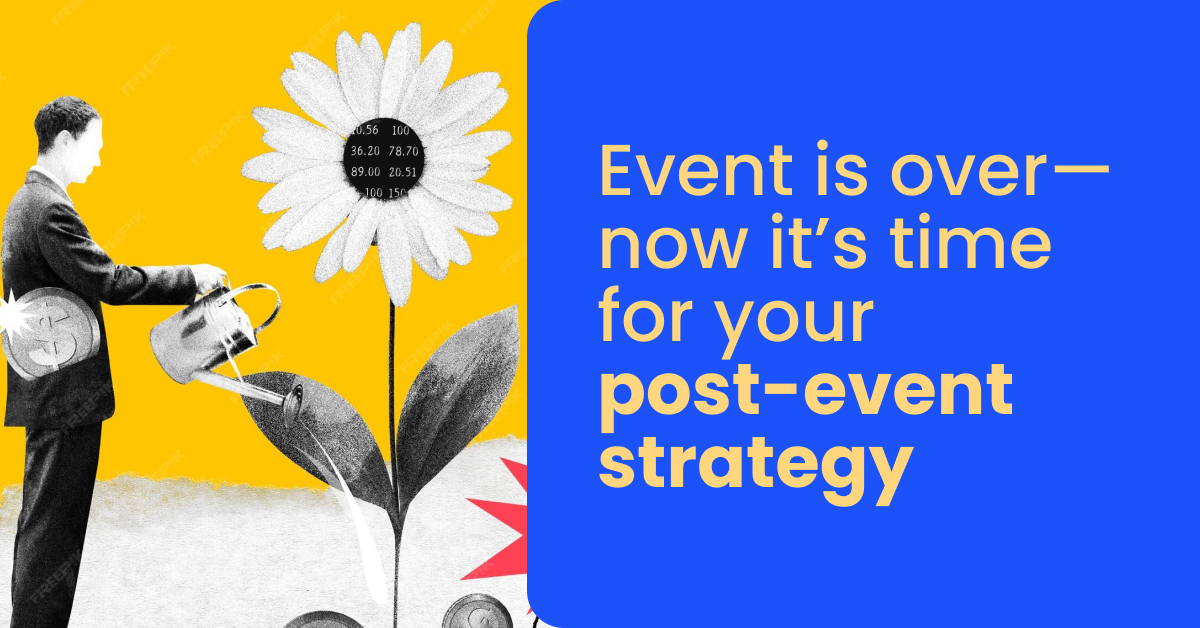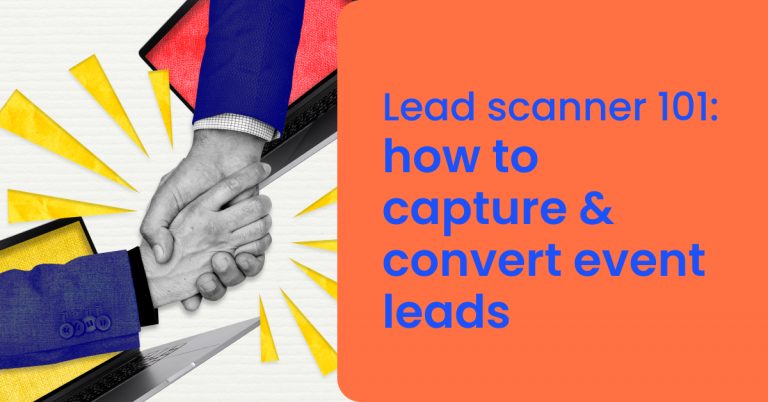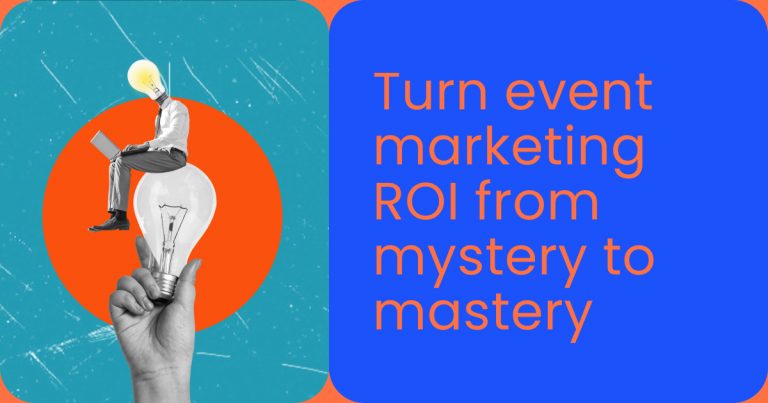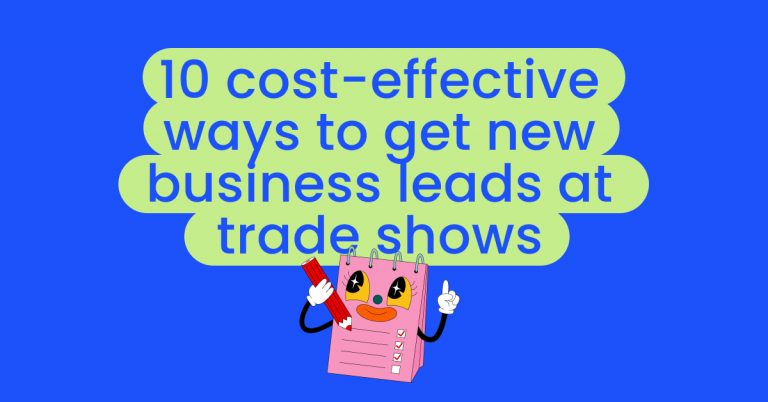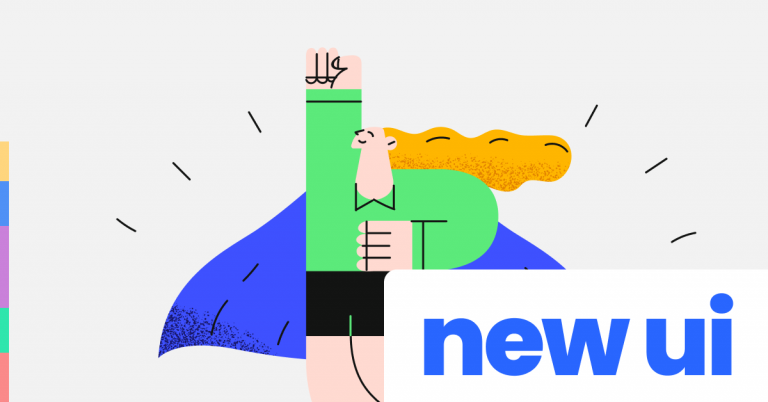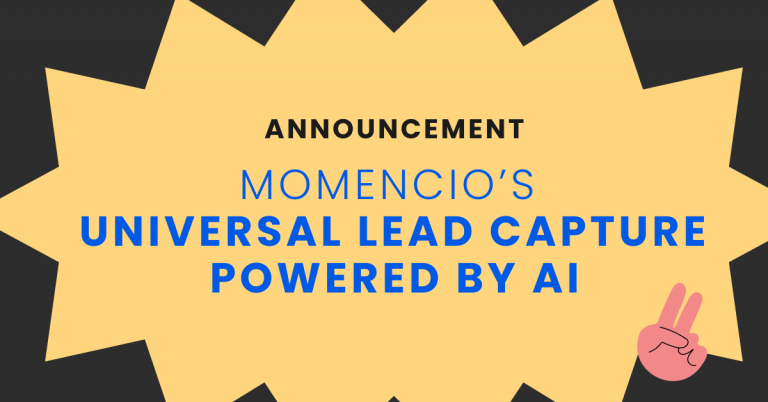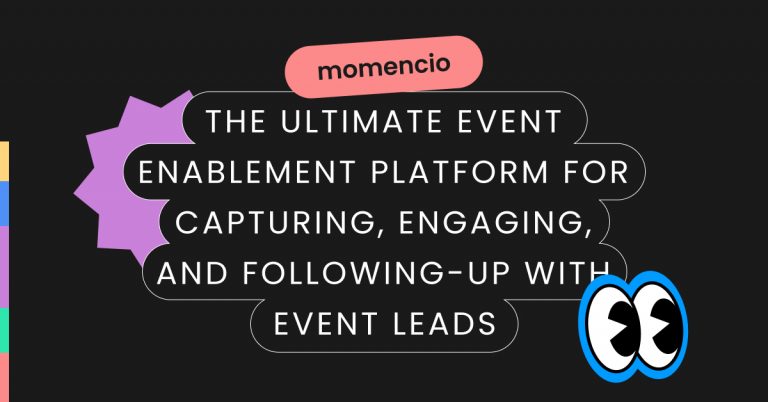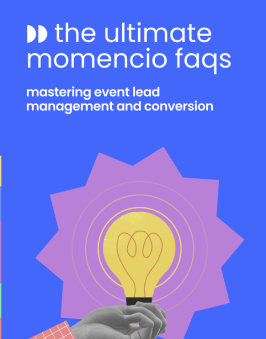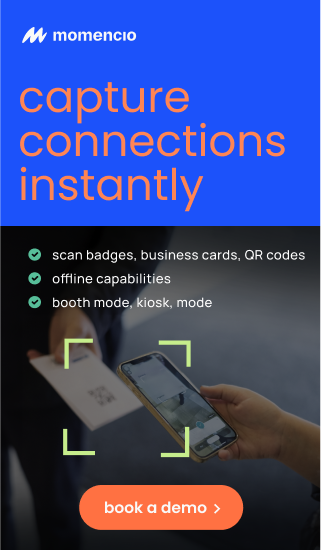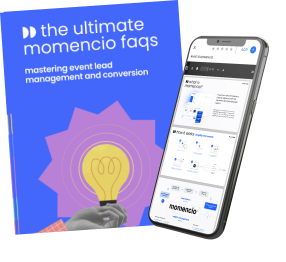The last booth is packed up, the final handshake is done, and the event is officially over. But if you think your job is finished, you’re making the same mistake as 70% of exhibitors—leaving potential deals on the table. Post-event engagement is where the real work begins, and how you handle it determines whether your event ROI soars or sinks.
Most companies focus all their energy on the event itself—perfecting the booth, networking, and gathering leads—only to drop the ball when it comes to follow-ups. Studies show that 50% of deals go to the first company that follows up after an event.
A structured post-event strategy is the missing link between a successful event and actual sales conversions. The key is to act quickly, strategically, and persistently—before the excitement fades and your prospects move on. So what does an effective post-event plan look like? Let’s break it down.
TL;DR
The event might be over, but the real opportunity starts now. 70% of leads generated at events are never followed up on, resulting in massive wasted potential. The key to maximizing ROI is a structured post-event strategy that includes:
- Immediate follow-ups (within 24–48 hours) to capitalize on momentum.
- Multi-channel engagement (email, LinkedIn, phone, and content marketing).
- Lead segmentation to prioritize high-intent prospects.
- Ongoing nurturing campaigns that keep your brand top-of-mind.
- Measuring success with key post-event metrics to refine and optimize future events.
A strong post-event game plan ensures that your investment translates into actual revenue instead of forgotten conversations.
From connections to conversions: why post-event strategy defines success
Networking at an event is just the beginning. The true value of an event lies in what happens afterward—how effectively those new connections are nurtured and turned into business opportunities. Without a structured post-event strategy, even the best trade show interactions can fade into missed opportunities.
1. The momentum window: acting before interest cools
Your prospects were excited to meet you, learn about your product, and discuss potential collaboration. But after the event, their inboxes are flooded, their schedules are packed, and that initial enthusiasm starts to fade. Speed matters—research shows that leads contacted within 48 hours are seven times more likely to convert than those followed up with a week later.
2. Why post-event engagement is the real ROI driver
A successful event is not just about the number of conversations had—it’s about the conversions that come from them. Too many companies measure event success by booth traffic or lead count when the real metric should be post-event revenue impact.
An effective post-event strategy ensures that:
- High-intent leads receive priority attention.
- Engagement is nurtured through multiple channels.
- Conversations continue beyond the event space.
3. Segmentation: treating leads differently based on intent
Not all event leads are equal. Some prospects are ready to buy, while others need nurturing. A one-size-fits-all approach fails to maximize conversions.
How to segment post-event leads effectively:
- Hot leads: Those who requested a demo or discussed immediate needs—fast-track them to sales.
- Warm leads: Interested but not urgent—send them targeted follow-ups and educational content.
- Cold leads: Minimal engagement—add them to a long-term nurture sequence instead of an aggressive sales push.
4. Multi-channel approach: reaching leads where they are
One email isn’t enough. The most effective post-event strategies use a mix of follow-up channels to reinforce messaging and stay top-of-mind.
- Email: The foundation of follow-ups—customized, valuable, and action-driven.
- LinkedIn: A great platform for reinforcing connections and providing thought leadership.
- Phone calls: Essential for high-priority leads who expressed immediate interest.
- Retargeting ads: Keep your brand visible as leads continue researching solutions.
5. The cost of doing nothing
Companies that neglect post-event engagement lose not just individual sales, but the compound value of long-term relationships. Every event interaction has the potential to generate referrals, create brand advocates, and open doors to unexpected opportunities—but only if nurtured correctly.
Final takeaway: events are just the starting line
The real race begins when the event ends. A strong post-event strategy ensures that every handshake, business card, and conversation turns into a tangible business opportunity.
The silent revenue killer: common post-event mistakes that stall momentum
The days and weeks following an event are critical for converting leads into customers. However, many companies unintentionally sabotage their success by making avoidable post-event mistakes. These missteps don’t just waste time—they cost real revenue.
1. Delayed follow-ups: waiting too long to re-engage
One of the biggest mistakes exhibitors make is delaying their first follow-up. A warm lead can quickly turn cold if not nurtured immediately. Research shows that response rates drop by 50% if follow-ups are delayed beyond 48 hours.
How to avoid this mistake:
- Set up automated email triggers to send an initial follow-up within 24 hours.
- Schedule personalized outreach from sales reps for high-priority leads.
- Use a CRM tool to organize and prioritize follow-up actions so no lead slips through the cracks.
2. Using generic, one-size-fits-all messaging
Leads don’t want to receive another “Great meeting you at [Event Name]! Let’s stay in touch” email. Generic outreach gets ignored because it fails to remind the prospect why they should engage with you.
How to avoid this mistake:
- Reference specific conversations from the event in your message.
- Personalize subject lines and email content to highlight relevant solutions.
- Send customized case studies, industry reports, or exclusive offers based on their interests.
3. Failing to prioritize hot leads
Not all leads are equal. Some are ready to buy, while others need nurturing. Treating all leads the same means losing high-intent buyers to faster competitors.
How to avoid this mistake:
- Use lead scoring to categorize contacts based on interest level and buying intent.
- Prioritize follow-ups with decision-makers and those who requested a demo.
- Assign high-value leads to experienced sales reps for personalized engagement.
4. Relying only on email for follow-ups
Most post-event strategies rely solely on email, but inboxes are crowded. On average, only 20-30% of emails get opened, meaning the majority of leads never see your message.
How to avoid this mistake:
- Diversify follow-up channels: use LinkedIn, phone calls, SMS, and direct mail to increase engagement.
- Send personalized LinkedIn connection requests with a message reminding them of your booth conversation.
- Call high-intent leads to schedule a meeting instead of waiting for them to reply via email.
- Neglecting long-term lead nurturing
Not every lead is ready to buy right away. Forgetting about leads who don’t convert immediately is a costly mistake. A well-structured nurture campaign keeps you top-of-mind until the prospect is ready to make a decision.
How to avoid this mistake:
- Develop a long-term email sequence with valuable content like webinars, case studies, and industry insights.
- Use retargeting ads to stay visible to leads who visited your booth but haven’t engaged yet.
- Set quarterly check-ins for prospects who expressed interest but aren’t ready to commit.
6. Poor internal coordination between sales and marketing
Sales teams often receive a list of leads from marketing without context on who engaged at the booth, what content was downloaded, or which sessions they attended. This disconnect leads to misaligned messaging and missed opportunities.
How to avoid this mistake:
- Use a shared CRM system so both sales and marketing teams can track lead interactions.
- Hold a post-event debrief where marketing provides insights on lead engagement.
- Align messaging so that sales reps continue conversations based on prior booth interactions.
7. Ignoring post-event analytics and insights
If you’re not measuring what worked and what didn’t, you’ll continue making the same mistakes. Too many companies fail to analyze follow-up effectiveness, leading to repeated inefficiencies in future events.
How to avoid this mistake:
- Track response rates, meeting conversions, and pipeline growth for post-event leads.
- Use A/B testing on follow-up emails to see what messaging resonates best.
- Identify drop-off points in engagement and refine future follow-up strategies accordingly.
Final takeaway: small mistakes, big consequences
Each of these common mistakes reduces the effectiveness of your event investment. By addressing these pitfalls, you can improve follow-up engagement, increase conversions, and maximize your trade show ROI.
Beyond the generic email: how to craft high-impact follow-ups
A follow-up email that lacks personalization and urgency is as ineffective as not following up at all. Attendees meet dozens—if not hundreds—of exhibitors, making it easy for your brand to be forgotten. High-impact follow-ups stand out by being timely, relevant, and value-driven.
1. Personalization is non-negotiable
Attendees receive countless generic follow-ups, many of which get ignored. The key to grabbing attention is making your outreach feel genuine and specific to each lead.
How to personalize effectively:
- Reference the exact conversation you had at the event to remind them of your discussion.
- Mention specific pain points or goals they shared with you.
- Use their first name, company name, and industry-specific insights to make the email feel tailored.
- If possible, include a personalized video message addressing them directly.
2. Add immediate value
Leads will only engage if they feel they are getting something useful. Instead of a simple “It was great meeting you,” give them something actionable.
What to include in a follow-up email:
- A relevant case study showcasing how your solution has helped similar companies.
- A free industry report or white paper that aligns with their business challenges.
- A quick win or insight they can implement immediately.
- A recording of an event session they may have missed but would find valuable.
3. Create a sense of urgency
Many leads intend to follow up, but they get busy and put it off indefinitely. A good follow-up creates a compelling reason to respond sooner rather than later.
Ways to add urgency:
- Offer a limited-time incentive (discount, free consultation, exclusive demo access).
- Mention a deadline for scheduling a follow-up conversation.
- Use social proof by highlighting industry peers who have taken action.
4. Make it easy to take the next step
Your follow-up should have a clear and simple call to action (CTA) that removes friction from the decision-making process.
Effective CTAs for event follow-ups:
- “Schedule a call” with a direct link to your calendar.
- “Download this free resource” with a compelling preview of its value.
- “Watch this 2-minute video” to reinforce your event messaging.
- “Join our LinkedIn group” to continue the conversation post-event.
5. Follow up across multiple channels
Email should not be your only touchpoint. Multi-channel follow-ups significantly increase response rates by engaging leads where they are most active.
How to diversify your follow-ups:
- Send a LinkedIn connection request with a message referencing your event conversation.
- Use SMS or WhatsApp for high-intent leads who prefer quick communication.
- Send a handwritten note or direct mail for VIP prospects.
- Use retargeting ads to keep your brand visible as they browse online.
6. Timing matters: when to send follow-ups
The sooner you follow up, the more likely you are to engage your leads.
| Follow-Up Stage | Action Item |
| Day 1–2 | Send a personalized email + LinkedIn connection request. |
| Day 3–5 | Follow up with a resource (case study, industry report). |
| Week 2 | Call or send a video message to warm leads. |
| Week 3+ | Add unresponsive leads to a nurturing campaign. |
7. Test, refine, and optimize
Not every follow-up strategy will work for every audience. Continuously testing and refining your outreach approach ensures better results over time.
Ways to optimize follow-ups:
- A/B test different email subject lines and CTA placements.
- Track open rates, reply rates, and meeting conversion rates to see what works.
- Adjust messaging based on engagement trends—if a certain pain point resonates, emphasize it more.
Final takeaway: follow-ups should be a continuation, not an afterthought
A strong post-event follow-up doesn’t feel like a cold email—it feels like a natural continuation of the conversation. By making outreach personalized, valuable, and timely, exhibitors can increase response rates, nurture meaningful relationships, and turn event leads into real revenue.
The power of storytelling: using content to keep attendees engaged
Event follow-ups shouldn’t feel transactional. Storytelling is one of the most effective ways to keep attendees engaged, reinforce key messaging, and nurture relationships beyond the event floor. By weaving narratives into your follow-up content, you can transform cold leads into invested prospects.
1. Why storytelling matters in post-event engagement
Facts tell, but stories sell. Attendees don’t remember dry statistics or product pitches—they remember experiences, emotions, and narratives that resonate with them. A compelling story:
- Builds emotional connections that strengthen trust and rapport.
- Creates relatability by addressing real-world challenges.
- Differentiates your brand from competitors who rely on generic sales messaging.
2. Turning event interactions into compelling stories
Attendees don’t want another product brochure—they want a reason to stay engaged. The best post-event storytelling transforms booth interactions into narratives that highlight their pain points and potential solutions.
Ways to craft engaging post-event stories:
- Client success stories—Showcase how businesses like theirs have thrived using your solution.
- Behind-the-scenes insights—Share the “making-of” moments from your event presence, like team preparations, speaker highlights, or challenges overcome.
- User-generated content—Feature quotes, testimonials, or social media posts from attendees who visited your booth.
- A journey-based email series—Instead of a one-off follow-up, create a sequence of emails that gradually tell a larger, compelling story.
3. Using multimedia storytelling to enhance engagement
A well-told story isn’t limited to text—leveraging multimedia makes your follow-ups even more impactful.
Multimedia storytelling strategies:
- Video recaps: Send a short, engaging video highlighting key takeaways from the event.
- Podcast episodes: Feature industry leaders discussing event themes in a post-show discussion.
- Infographics: Summarize key event insights in a visually compelling format.
- Live Q&A sessions: Host a post-event AMA (Ask Me Anything) session to keep conversations going.
4. Aligning storytelling with lead nurturing
Not all leads are ready to buy immediately. Strategic storytelling nurtures engagement over time by delivering value-based content at every stage of the buyer’s journey.
| Lead Type | Storytelling Strategy |
| Hot leads | Case studies featuring success stories similar to their business. |
| Warm leads | Industry insights or thought leadership content that builds trust. |
| Cold leads | Entertaining, problem-solving content that keeps your brand top-of-mind. |
5. Keeping your brand narrative consistent across channels
Your storytelling shouldn’t stop at email. Ensuring a consistent brand message across all follow-up channels keeps engagement levels high.
How to maintain storytelling consistency:
- Social media posts—Reinforce event takeaways with engaging LinkedIn articles or Twitter threads.
- Retargeting ads—Use storytelling-driven ads that remind attendees of your key value propositions.
- Follow-up calls—Incorporate storytelling elements when speaking with leads to make conversations more engaging.
Final takeaway: storytelling turns follow-ups into long-term relationships
Your post-event strategy should go beyond check-ins and sales pitches. By using storytelling to create engaging, multi-touch follow-ups, you can keep attendees invested, nurture trust, and move leads closer to conversion.
Timing is everything: when and how often to reach out
Following up at the wrong time—or not following up enough—can mean the difference between a closed deal and a lost opportunity. Timing plays a crucial role in how prospects perceive your outreach and how likely they are to engage with your follow-up efforts. So, when should you reach out, and how often?
1. The 24- to 48-hour rule: striking while the iron is hot
Studies show that following up within 24 to 48 hours after an event increases response rates by up to 60%. If you wait too long, interest fades, and leads move on to other priorities.
What to do within the first 48 hours:
- Send a personalized email thanking them for their time and referencing a specific conversation.
- Connect on LinkedIn with a friendly message reinforcing your discussion.
- Deliver immediate value by including a resource, such as a case study or event session recording.
2. The second follow-up: reinforcing engagement (Day 3–5)
If the initial follow-up goes unanswered, many sales reps stop trying. That’s a mistake. A second touchpoint within a few days shows persistence and keeps your company top-of-mind.
Best practices for the second follow-up:
- Send a follow-up email with an additional piece of valuable content.
- Mention an upcoming opportunity to connect, such as a webinar or exclusive demo.
- Use a different medium—if your first message was an email, try a LinkedIn message or a quick phone call.
3. Week 2: mixing up your outreach methods
By the second week, your goal should be to deepen engagement and transition leads into real sales conversations.
How to keep leads engaged in Week 2:
- Schedule a quick call to discuss their needs and any lingering questions.
- Send a short video message summarizing your offering and why it’s relevant to them.
- Introduce them to a customer success story that relates to their industry.
4. Week 3 and beyond: long-term nurturing for undecided leads
Not every lead is ready to buy immediately, but that doesn’t mean they won’t be in the future. A long-term follow-up strategy ensures that your brand stays relevant without being intrusive.
Best practices for long-term nurturing:
- Monthly check-ins with new insights, industry reports, or exclusive invitations.
- Drip email campaigns that deliver high-value content over time.
- Social media engagement—liking, commenting, and sharing relevant posts to stay visible.
5. How to avoid overloading your leads
Too much follow-up can feel overwhelming, while too little can make your brand forgettable. Finding the right balance is key.
Signs you’re following up too much:
- Your emails are going unopened or unsubscribes are increasing.
- Leads are responding but seem disengaged or frustrated.
- You’re sending multiple follow-ups without adding new value.
How to adjust your approach:
- Space out follow-ups to prevent overwhelming prospects.
- Alternate between soft and direct asks—not every message needs to be a sales pitch.
- Listen for engagement cues—if they download a resource or engage with your content, follow up accordingly.
Final takeaway: well-timed follow-ups create lasting engagement
Following up isn’t just about persistence—it’s about delivering the right message at the right time. A well-structured follow-up sequence ensures that leads stay engaged, trust builds over time, and conversions happen naturally.
From warm lead to closed deal: how to nurture without being annoying
Not every lead is ready to buy immediately after an event, but that doesn’t mean they won’t in the near future. The key to successful lead nurturing is staying top-of-mind without being pushy. Prospects don’t want aggressive sales tactics—they want value, relevance, and meaningful engagement. So how do you nurture warm leads effectively without driving them away?
1. Lead segmentation: treating prospects based on intent
Not all warm leads are the same, and a one-size-fits-all nurturing approach doesn’t work. Understanding where each prospect stands in their buyer’s journey allows you to tailor your follow-ups accordingly.
How to segment warm leads effectively:
- High-intent leads: Those who requested a demo or showed buying signals. Move them into direct sales conversations quickly.
- Moderate-intent leads: Interested but not ready to commit. Provide educational content and light follow-ups.
- Low-intent leads: Those who engaged but aren’t looking to buy soon. Place them into long-term nurture campaigns.
2. Provide value in every interaction
The fastest way to lose a warm lead? Constantly asking for a sale without providing anything in return. Instead of repeated “Just checking in” emails, focus on giving prospects something useful.
Ways to add value in follow-ups:
- Share exclusive industry insights they won’t find elsewhere.
- Offer a relevant case study showcasing how similar companies benefited from your solution.
- Provide a free tool, guide, or white paper to help them solve a pain point.
- Invite them to an upcoming webinar or networking event to keep them engaged.
3. Personalization: making outreach feel human
Nothing pushes a lead away faster than receiving generic, automated emails that feel robotic. Personalization builds trust and increases response rates.
Best practices for personalizing lead nurturing:
- Mention past interactions—remind them of their specific concerns and interests.
- Use their name, company, and industry-specific insights to tailor messaging.
- Reference their trade show experience—if they attended a session or demo, use that as a conversation starter.
4. Multi-channel engagement: meet leads where they are
Email is essential, but relying on it alone limits your ability to connect with prospects effectively. Using a multi-channel approach increases engagement and improves conversion rates.
How to nurture leads across different channels:
- Email: The foundation of nurturing—deliver valuable content consistently.
- LinkedIn: Connect and engage with posts or direct messages.
- Phone calls: A well-timed call (without being pushy) can create real momentum.
- Retargeting ads: Keep your brand top-of-mind with targeted social media ads.
5. Create a structured follow-up timeline
Consistency is key. A structured follow-up timeline ensures leads are engaged without feeling overwhelmed.
| Timeframe | Action Item |
| Week 1 | Send a personalized thank-you email + LinkedIn connection request. |
| Week 2 | Provide a relevant industry insight or invite them to a webinar. |
| Week 3 | Follow up with a case study related to their business challenges. |
| Month 2–3 | Send check-in emails with soft CTAs (e.g., “Thought this might interest you”). |
| Ongoing | Add to long-term nurturing sequences with valuable content. |
6. Knowing when to push forward—and when to pull back
There’s a fine line between being persistent and being intrusive. If a lead isn’t engaging, pushing harder won’t work—instead, adjust your approach.
Signs a lead needs a lighter touch:
- They’ve opened emails but haven’t responded.
- They’ve engaged on LinkedIn but haven’t taken further action.
- They seem interested but keep delaying commitments.
How to adjust your strategy:
- Give them breathing room—pause outreach for a few weeks before re-engaging.
- Shift to educational content—instead of pushing sales, provide helpful resources.
- Let them opt into future conversations—send an email like, “Would you like me to check back in a few months?”
Final takeaway: nurturing leads should feel natural, not forced
The best lead nurturing strategies focus on relationship-building, not just closing deals. By providing value, personalizing outreach, and engaging through multiple touchpoints, you can guide warm leads toward conversion without overwhelming them.
Measuring what matters: key post-event success metrics
Success at a trade show isn’t just about collecting business cards or scheduling meetings—it’s about tracking the right metrics to understand your event’s true impact on revenue and long-term relationships. The best post-event strategies are data-driven, ensuring every interaction is measured, optimized, and improved for future events.
1. Lead engagement rate: are your leads responding?
A large contact list means nothing if leads don’t engage with your follow-ups. Tracking how many prospects open, click, and respond to emails or LinkedIn messages helps determine how compelling and relevant your outreach is.
Key metrics to track:
- Email open rates: Measures how many recipients open your emails (ideal benchmark: 20–30%).
- Click-through rates (CTR): Tracks engagement with links in emails (industry standard: 2–5%).
- Response rates: The percentage of leads who reply or book a meeting (goal: 10–15%).
- LinkedIn engagement: Connection requests accepted, comments, or direct message replies.
2. Meeting conversion rate: are leads moving to the next step?
A high meeting conversion rate means your outreach is effective at progressing leads from interest to action. If your conversion rate is low, it may indicate your messaging needs refining or your leads weren’t properly qualified.
How to improve meeting conversions:
- Use strong, clear CTAs in follow-ups (e.g., “Book a 15-minute call this week”).
- Provide a compelling reason to meet (offer insights, demos, or tailored solutions).
- Ensure sales reps follow up persistently—most conversions happen after 2–3 touchpoints.
3. Sales pipeline impact: are leads turning into opportunities?
Beyond scheduling meetings, the real measure of success is how many trade show leads move into the sales pipeline. If leads aren’t progressing, it could be due to poor lead qualification or ineffective nurturing.
Pipeline metrics to monitor:
- Lead-to-opportunity rate: Percentage of leads that enter the sales pipeline (benchmark: 15–30%).
- Sales cycle length: How long it takes for event leads to convert compared to other channels.
- Pipeline value generated: Total deal value associated with trade show leads.
4. Revenue attribution: what’s the ROI of your event?
One of the most critical questions post-event: Was it worth the investment? Tracking revenue generated from event leads helps determine if your strategy is delivering real business value.
Key ROI metrics:
- Total revenue generated from event leads.
- Customer acquisition cost (CAC) for trade show leads vs. other channels.
- Return on investment (ROI) = (Revenue from event leads – Event costs) ÷ Event costs.
5. Follow-up effectiveness: are your post-event efforts working?
Beyond lead conversion, it’s important to analyze which follow-up methods are driving engagement and where leads are dropping off.
Ways to assess follow-up performance:
- Compare response rates across different channels (email, phone, LinkedIn).
- Use A/B testing to see which email subject lines, CTAs, and formats work best.
- Track lead re-engagement—how many leads convert after a second or third touchpoint.
6. Long-term impact: are leads engaging beyond the event?
Not all trade show leads convert immediately. Some may require long-term nurturing, making it essential to track engagement over time.
Long-term engagement metrics:
- Newsletter or webinar sign-ups post-event.
- Content engagement (downloads, clicks, video views).
- Repeat engagement at future events or meetings.
Final takeaway: what gets measured gets improved
By tracking these critical post-event metrics, companies can refine their approach, improve engagement, and increase trade show ROI. The best exhibitors don’t just collect leads—they analyze data to turn those leads into long-term customers.
Lessons from top-performing exhibitors: what the best do differently
Some exhibitors consistently outperform others—not because they have bigger budgets, but because they approach post-event strategy with precision, creativity, and consistency. So what separates high-performing exhibitors from the rest? Let’s break down their winning tactics.
1. They follow up fast—within 24 hours
The best exhibitors understand that time kills deals. Instead of waiting weeks to reach out, they contact leads within 24 hours of the event, while the conversation is still fresh.
How they do it:
- Pre-schedule follow-up emails to go out the day after the event.
- Have sales teams ready with personalized outreach scripts.
- Use automation for efficiency while adding personal touches to keep it human.
2. They use a multi-touch follow-up strategy
Top performers know that one email isn’t enough. They use multiple channels to ensure their brand stays top-of-mind.
What they do differently:
- Send an initial email thanking the prospect and referencing their conversation.
- Follow up with a LinkedIn message to continue the relationship in a casual way.
- Use phone calls for high-value leads who showed strong buying intent.
- Leverage retargeting ads to keep their brand visible on social media.
3. They personalize every interaction
Generic follow-ups don’t work. High-performing exhibitors craft customized messaging that speaks directly to each prospect’s needs.
How they make it personal:
- Reference specific conversations from the trade show booth.
- Use lead segmentation to tailor messaging based on intent.
- Provide industry-specific case studies that relate to the prospect’s business.
4. They nurture leads strategically instead of spamming
Top exhibitors don’t bombard leads with daily emails—they build trust by delivering consistent, valuable content over time.
Their approach to nurturing:
- Week 1: Send a thank-you email with an offer or a valuable resource.
- Week 2: Share a customer success story relevant to their industry.
- Week 3: Invite them to an exclusive webinar or product demo.
- Ongoing: Continue engagement with high-value content without being intrusive.
5. They align sales and marketing for seamless execution
One of the biggest differentiators of successful exhibitors is internal alignment between sales and marketing.
How they do it:
- Marketing provides detailed lead insights from the event (who visited the booth, what content they engaged with).
- Sales teams follow up with context, ensuring continuity in conversations.
- CRM tools are used effectively to track and manage leads in real-time.
6. They track and optimize follow-up performance
Instead of blindly following up, top exhibitors analyze their follow-up metrics to see what works—and what doesn’t.
Key metrics they track:
- Response rates to emails and LinkedIn messages.
- Meeting conversion rates to see how many leads book calls.
- Sales pipeline impact to measure how many leads turn into customers.
- Engagement trends to refine messaging and outreach timing.
7. They turn trade show connections into long-term relationships
The best exhibitors don’t treat leads as one-time transactions—they focus on relationship-building for future business opportunities.
How they cultivate long-term engagement:
- Stay active on social media—commenting on and engaging with prospects’ content.
- Provide continued value through newsletters, industry reports, and insights.
- Host post-event networking sessions to deepen relationships.
Final takeaway: success isn’t accidental—it’s strategic
Top-performing exhibitors don’t just hope for results; they engineer them. By following up quickly, using multi-touch engagement, personalizing outreach, and tracking performance, they turn event leads into real business opportunities.
Conclusion
Trade shows are a significant investment, and their success depends on what happens after the event. A strong post-event strategy ensures that every handshake, business card, and booth conversation turns into a real business opportunity.
Key takeaways:
- Follow up within 24–48 hours to maximize engagement.
- Use a multi-channel approach—email, LinkedIn, and calls.
- Segment leads to personalize follow-ups and nurture effectively.
- Measure key post-event metrics to optimize your strategy.
- Turn engagement into long-term relationships with strategic nurturing.
Don’t let your event leads go cold—turn them into customers. Book a demo with momencio today and discover how smart automation and real-time engagement tracking can help you close more deals faster.
FAQs
- How soon should I follow up after a trade show?
- Follow up within 24–48 hours while your brand and conversation are still fresh in the prospect’s mind. Leads contacted within this window are 7x more likely to convert than those contacted later.
- What should my first follow-up message include?
- Your first follow-up should be personalized and value-driven. It should:
- Reference your booth conversation to jog their memory.
- Provide a useful resource like a case study or industry report.
- Include a clear call to action (CTA)—whether it’s booking a demo, scheduling a call, or accessing exclusive content.
- Your first follow-up should be personalized and value-driven. It should:
- How often should I follow up?
- Most sales require five or more follow-ups, yet most exhibitors stop after one or two. A well-structured follow-up cadence ensures engagement without overwhelming leads.
- Day 1–2: Initial follow-up email + LinkedIn connection.
- Day 3–5: Second email with an additional resource or CTA.
- Week 2: Call or personalized video message.
- Week 3+: Long-term nurture emails with insights and content.
- Most sales require five or more follow-ups, yet most exhibitors stop after one or two. A well-structured follow-up cadence ensures engagement without overwhelming leads.
- How do I keep leads engaged if they’re not ready to buy?
- If a lead isn’t immediately ready to purchase, keep them engaged through educational and value-driven content:
- Send case studies that showcase successful implementations.
- Offer invites to exclusive webinars or networking events.
- Use drip campaigns to deliver relevant insights over time.
- If a lead isn’t immediately ready to purchase, keep them engaged through educational and value-driven content:
- What’s the best way to track post-event success?
- Use key metrics to measure post-event performance:
- Response rate: How many leads engage with your follow-ups.
- Meeting conversion rate: Percentage of leads who book a meeting.
- Lead-to-opportunity ratio: How many leads enter your sales pipeline.
- Trade show ROI: Revenue generated vs. event investment.
- Use key metrics to measure post-event performance:
